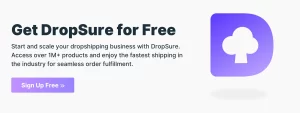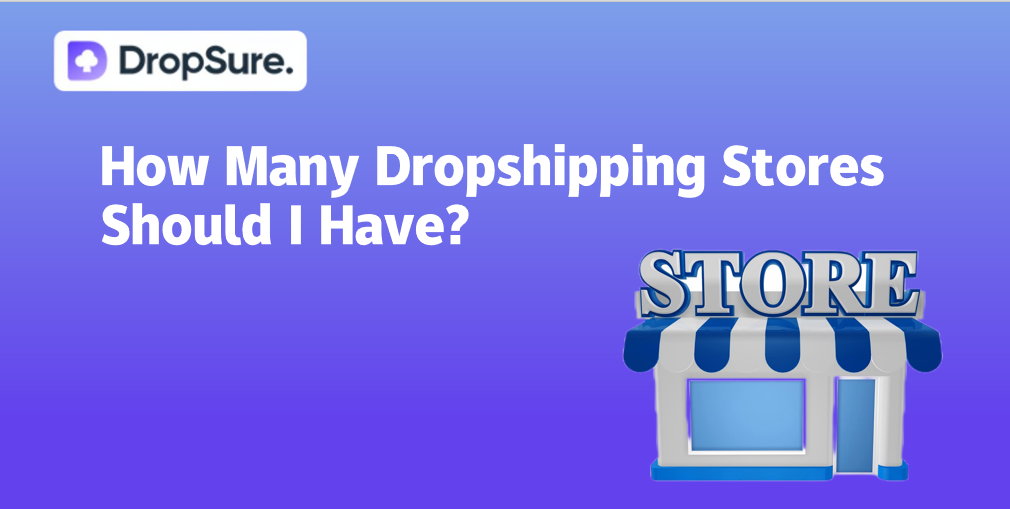
In 2025, e-commerce has fully integrated into our daily lives. From placing orders while scrolling through TikTok to AI-powered product recommendations, the way consumers shop is becoming increasingly seamless and instinctive.
In this landscape, if you’re looking to start your own online business with low cost and high efficiency, Shopify remains one of the best website-building platforms out there.
So, what exactly is Shopify? What can it really do? And what’s new with Shopify in 2025?
This guide will walk you through everything you need to know — in the most straightforward and practical way possible — to help you understand how Shopify works and how you can make the most of it this year.
What is Shopify?
In simple terms, Shopify is a platform specifically designed to help people “build e-commerce websites.” Whether you’re selling clothes, jewelry, digital products, e-books, courses, or even running a “dropshipping” business without holding any inventory, Shopify can meet your needs.
If you’ve worked with WordPress before, you can think of Shopify as the “e-commerce version of WordPress,” but much easier to use. You don’t need to know any coding or worry about things like servers, plugins, or templates. Just sign up for an account, choose a template, and fill in some product information — within minutes, you’ll have your very own online store. The whole process is as easy as “moving in” — hassle-free and efficient.
And Shopify isn’t just a simple template system; it’s a fully mature, end-to-end e-commerce backend platform, supporting:
• Product management (pricing, inventory, categories, etc.)
• Multi-channel sales (website, Facebook, Instagram, TikTok, Google, etc.)
• Customer relationship management (membership systems, email marketing)
• Order and logistics management
• Online payments and checkout (supporting various payment methods worldwide)
• SEO optimization, data analytics, A/B testing, and other e-commerce operations features
These features don’t just “give you a website”; they enable you to manage your online business as if you were running a real store, taking care of every aspect.
By 2025, more than 2 million active merchants worldwide are using Shopify, covering 175 countries and regions. Users range from solo entrepreneurs, small family businesses, and small teams to large brands making millions annually.
For example, you may have heard of brands like Allbirds (eco-friendly sneakers), Gymshark (fitness apparel), and Kylie Cosmetics (Kylie Jenner’s makeup brand). They all started with Shopify. This shows that Shopify isn’t just for small businesses — big brands also use it as their “main platform.”
What Can Shopify Do?
Build Your Brand’s Independent Website
With Shopify, you can quickly create your own brand’s official website. It supports multiple languages and currencies, is mobile and desktop-friendly, and offers full control over design and style.
Manage Products and Inventory
The backend allows you to easily upload products, set categories, manage inventory status, set SKU attributes, and more. Shopify supports various product types, such as variant products, bundles, pre-orders, etc.
Accept Payments
Shopify integrates with major global payment methods, including:
•Shopify Payments
• PayPal
• Apple Pay / Google Pay
• Amazon Pay
• Multi-currency credit cards
• Handle Orders and Logistics
You can customize shipping rules or use Shopify Shipping to enjoy discounted rates with UPS/DHL/FedEx. Integrating with third-party logistics providers (like 4PX, CJ Dropshipping) is also completely possible.
Data Analytics and Customer Relationships
Shopify’s backend features a comprehensive analytics dashboard, allowing you to track conversion rates, page views, repeat purchase rates, customer demographics, and more. You can also use the CRM features to manage customers and set up automated email marketing campaigns.
New Changes to Shopify in 2025
AI Empowerment Upgraded (Shopify Magic)
Although “AI empowerment” sounds common nowadays, Shopify is one of the platforms that truly puts AI to practical use. As early as 2023, Shopify launched an AI feature called Shopify Magic, and by 2025, this system has evolved to become highly mature and user-friendly — it can almost be considered a “plug-in” for cross-border independent store operations.
You can think of Shopify Magic as a personal AI assistant that silently helps you handle many tasks that used to take a lot of time, effort, or even outsourcing to complete, such as:
Auto-generating Product Descriptions
All you need to do is upload a product image or enter a simple keyword, and Shopify Magic will automatically recognize what you’re selling, like “men’s hoodie,” and immediately generate a well-structured, tone-appropriate, sales-driven product description — and it can switch between English and Chinese automatically! This is perfect for sellers targeting both the U.S. and European markets, eliminating the need for manual translations.
Auto-Generating Titles, Writing Blogs, and Creating Email Copy
Anyone who’s opened a store knows that writing content is a tedious job. Each product needs a name, a title, and you also have to regularly write brand blogs or marketing emails for holidays. Writing manually is exhausting, and leaving it to AI might feel risky. Now, Shopify Magic can generate a promotional email draft that matches your brand tone and includes discount information in seconds, or create an SEO-friendly blog post based on recent traffic to your site. This can greatly reduce labor costs.
Recommending Best-Selling Products and Analyzing Customer Behavior
This feature is impressive. Shopify Magic can analyze your store’s past sales data and customer browsing behavior to automatically give product recommendations, such as “this t-shirt is selling well, we recommend adding a new color” or “female customers from XX country often buy this product after viewing this one.” These aren’t random suggestions; they are AI-driven behavior predictions based on modeling, which can be helpful for encouraging repurchases, cross-selling, and guiding customers to checkout.
Example:
For instance, if you upload a picture of a “hoodie,” the system can automatically recognize it as a “men’s casual winter hoodie” and then generate a product description like this:
“This men’s hoodie is made from soft, skin-friendly cotton-blend fabric, combining comfort and warmth. Its minimalist design is perfect for everyday wear, whether you’re relaxing at home or heading outdoors — an essential piece in your wardrobe.”
Multi-Platform Sales Synchronization Made Easier
If you’ve done cross-border e-commerce before, you probably know one common pain point: uploading products over and over again, managing each platform separately — it’s exhausting!
But by 2025, Shopify has already optimized this process to perfection. It now supports seamless integration with major global social platforms and shopping channels, meaning — you only need to publish a product once in the Shopify backend, and it will be synced across multiple platforms, allowing you to manage inventory and orders all in one place. The efficiency is doubled!
Currently, Shopify has integrated with these core platforms (and the integrations are very stable):
TikTok Shop (Supports embedded checkout)
TikTok is now not just a traffic source but also a major sales platform. Shopify has established deep cooperation with TikTok, allowing users to purchase directly within TikTok when you link products to videos. No need to jump to another page, which greatly increases the conversion rate. You just need to select the sync option in the Shopify backend, and inventory, orders, and customer information will automatically sync.
Facebook & Instagram Shops
These two platforms remain among the most important social channels for e-commerce in Europe and America. Shopify supports syncing your independent store products to Meta’s marketplace, including both Facebook Shop and Instagram Shops. Product information, images, and prices will be transferred. You can also insert product tags in Instagram posts or Stories for a “browse and buy” experience.
Google Shopping
Want your products to appear in Google search results and shopping pages? Shopify offers a plugin that connects directly with Google Merchant Center, allowing you to sync your products as “Google Shopping Ads.” Keyword matching and bidding can also be managed directly from the Shopify backend, saving you a lot of time on ad operations.
YouTube Live Sales Plugin
This is a cool feature Shopify launched in the past couple of years. After YouTube started supporting live-stream shopping, Shopify introduced an official plugin that allows you to display product cards in real-time during live streams, link directly to purchase pages, and even view Shopify’s inventory and sales data in the live stream backend. It’s perfect for brands that engage in content-driven sales.
Pinterest & WhatsApp
Pinterest is a popular discovery platform among female users in Europe and America. Shopify’s Pinterest plugin can automatically generate purchasable Pins. WhatsApp, on the other hand, connects with customers for instant communication and provides a “browse and buy” sales experience in real-time. This is especially useful for markets in Latin America, the Middle East, and India.
Shopify Markets Pro
In simple terms, Shopify Markets Pro is an all-in-one global sales system designed for cross-border sellers. It helps you localize every sales detail—from pricing and taxes to shipping and payments—in different countries and regions.
Automated Local Taxes, VAT & Duties
Tax rates and import rules vary by country, and manually researching them can lead to compliance risks or fines. Markets Pro automatically calculates and applies the correct taxes, VAT, and duties based on the customer’s location. For example, Germany’s 19% VAT is added at checkout, ensuring transparency for buyers and hassle-free compliance for you.
Auto-Switching Language, Currency & Shipping
If your store only displays English and USD, many non-English-speaking customers may abandon their carts. With Markets Pro, your site automatically adapts—French customers see prices in EUR and content in French, while Japanese shoppers see JPY and Japanese.
For shipping, Shopify recommends and integrates local carriers—like DHL for Germany or Australia Post for Australia—so you don’t have to manually configure logistics.
Localized Payment Methods
Payment preferences differ globally:
- US: Credit cards & PayPal
- China: Alipay & WeChat Pay
- Europe: Klarna, iDEAL, Sofort
Markets Pro enables these local payment options automatically, reducing checkout friction and increasing conversions.
Example Scenario
You run a Shopify store selling hoodies and want to expand to Germany. With Markets Pro:
1.German customers see your site in German with EUR pricing.
2.Checkout auto-adds 19% VAT.
3.Buyers pay via Sofort or PayPal (their preferred methods).
4.You process orders as usual—Shopify handles tax filings and settlements.
One-Sentence Summary
Shopify Markets Pro is like your “golden translator + financial advisor + legal consultant + overseas support team” rolled into one. With it, even a solo entrepreneur can sell globally effortlessly—no need for complex registrations or foreign trade systems.
How to Use Shopify? A One-Stop Setup Guide
Step 1: Register an Account and Choose a Plan
Shopify offers a 3-day free trial, after which you can choose from the following plans:
● Starter Plan ($5/month, ideal for social media sales)
● Basic ($39/month, suitable for beginners)
● Shopify ($105/month, ideal for scaling)
● Advanced ($399/month, for large sellers)
Step 2: Choose a Theme + Customize Settings
You can choose from hundreds of themes (both free and paid templates), and use the drag-and-drop page editor to quickly customize your homepage, product pages, “About Us” page, and more.
No coding skills required to build a professional interface. However, if you have HTML/CSS knowledge, you can dive deeper into customization.
Step 3: Upload Products & Set Categories
‣Upload product images, names, descriptions, prices, inventory, weight, SKUs, etc. You can upload in bulk (via CSV import) or sync products through third-party plugins.
‣Plugins ideal for dropshipping: DSers, Spocket, Zendrop, CJdropshipping, etc.
Step 4: Set Up Payments, Shipping, and Taxes
‣ Link Shopify Payments or PayPal for payment processing
‣ Set up shipping regions and shipping templates
‣ Enable automatic tax calculation (especially for cross-border sales)
Step 5: Launch Your Website & Connect a Domain
After publishing your website, you can use Shopify’s free subdomain (e.g., yourstore.myshopify.com) or link a custom domain (e.g., yourbrand.com).
Step 6: Operations and Marketing
‣ Connect Google Analytics and Facebook Pixel for conversion tracking
‣ Use Shopify’s email marketing tools and SMS reminder system
‣ Create limited-time discounts, coupons, membership systems, and other marketing strategies
Who Is Shopify Best For?
Solo Entrepreneurs
If you have a product or an idea but no tech background, Shopify lets you launch your store with zero coding — fast and easy.
Dropshipping Sellers
Shopify is one of the most popular platforms for global dropshipping. With a wide range of plugins and seamless integration, it’s perfect for building a high-margin, low-maintenance store.
Brands Going Global
For businesses looking to build their own branded website, break away from reliance on marketplaces (like Amazon), and grow long-term brand equity — Shopify is the go-to platform for independent brand sites.
Creative Content Creators
Bloggers, YouTubers, and KOLs can monetize their audience by selling merch and products directly through Shopify. Turn fan traffic into real revenue.
Frequently Asked Questions (FAQ)
1. What’s the difference between Shopify and platforms like Amazon, TEMU, or Shopee?
‣Shopify is a standalone store — you own the customer data and have full control.
‣Amazon, TEMU, Shopee are marketplaces — you benefit from built-in traffic but are subject to strict platform rules.
Pro Tip: Combine both! Use Shopify to build your brand and retain customers, and let Amazon handle that crucial first transaction.
2. Does Shopify support Chinese?
Yes! As of 2025, Shopify’s admin interface can be fully switched to Chinese. Their customer support also covers multiple languages, and domestic service providers (like Dianjiang or Shoptop) integrate smoothly with the ecosystem.
3. What if I don’t know how to promote my store?
Shopify comes with a full suite of marketing tools, including:
‣Built-in SEO features
‣Blogging system
‣Plugins for Google Ads, Meta Ads, TikTok Ads
‣Social media integration (IG, FB, Pinterest)
And if marketing feels overwhelming, you can always outsource to an agency or use automated ad tools like Shopify Inbox + AI assistant to handle it for you.

 14 min read
14 min read







